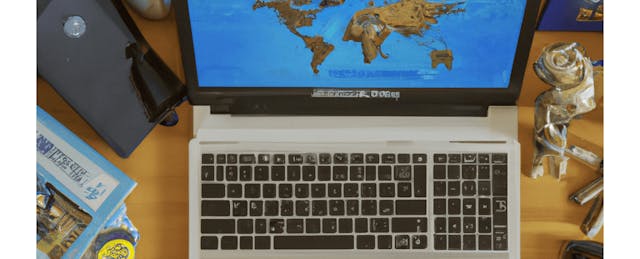When Shai Reshef started a free online university called University of the People nearly 15 years ago, skepticism was high. Online education was viewed as a poor substitute for in-person study, and anyway, how could something free be financially sustainable?
Today, the college has won accreditation. It has grown to serve 126,000 students. And it has some 37,000 volunteers. Its student body comes from all around the world, though 51 percent are first-generation students living in the U.S. And it has worked to support students who have unique obstacles to higher ed, including more than 16,000 refugees.
The University of the People has found a way to keep going and growing — with a basic model of requiring fees for taking the final assessments, and offering financial aid for those who can’t afford to do even that. It has also come up with plenty of clever ways to keep costs low, such as relying on free or low-cost open educational resources rather than costly commercial textbooks.
Meanwhile, the pandemic has changed views about online education, since by now, just about every professor and student has had some experiences studying online.
But some still have concerns about all-online colleges, especially around whether the institutions can verify that the students are doing their own work.
Should more colleges adopt the methods of this free university? If so, will they?
EdSurge connected with Reshef to ask what he’s learned over the past 15 years, what his advice is to college leaders and where he sees online education going.
Listen to the episode on Apple Podcasts, Overcast, Spotify, Stitcher or wherever you get your podcasts, or use the player on this page. Or read a partial transcript below, lightly edited for clarity.
EdSurge: What was the hardest thing about getting this free university off the ground?
Shai Reshef: Raising enough money and donations was — and still is — the hardest thing for us. We are sustainable. The students pay $120 per course for the assessment, and this amount makes us sustainable. But there are a lot of people around the world — refugees and others — who cannot afford even that. We need scholarships in order to enable them to study. And we have a hard time finding enough resources to do that.
Early on, many people said your model sounds nice but that it won’t be sustainable. Besides these fees, what else do you do to keep costs down?
The major thing is the volunteers. I'm a volunteer. The deans are volunteers. The faculty are volunteers.
And there are other elements because we are extremely efficient. We have very few degrees: business administration, computer science and health science in an associate and bachelor’s degree, and [in graduate degrees, we offer] an MBA, a master’s in education and master’s in IT. Those are the programs that will lead our students to find jobs, and that's why they are coming to us.
Most colleges can’t just get professors to volunteer, and I’m sure many of your professors can only do it because they have paid jobs at other colleges. What can traditional colleges use from your model?
I would divide the universities into two categories: The selective and the non-selective. The non-selective colleges should merge in order to have the benefit of being big and being more efficient. Otherwise, they won't survive. A university with 1,000 students that charges $50,000 a year — I doubt it can do that for long.
The most selective universities, I think that many of them should move partially to be online. You could tell your students, ‘Listen, I want you to study one year tuition-free and three years on campus.’ Now the campus experience will be shrunk by a year, but the cost will be shrunk by 25 percent as well.
You've also said in the past that you felt like you're a model that others would emulate. But I haven't really seen that. So why haven't others moved in and done more of what you've talking about here?
Well, to be honest, I'm surprised, myself. So I don't know the answer. I can speculate, and I think that the best answer I can give is skepticism. You know, when I describe our model, people say, ‘Nah, not really.’ In every industry, if you have a model and someone says that the same results can be achieved in a fraction of the price, the natural response is ‘no way.’


